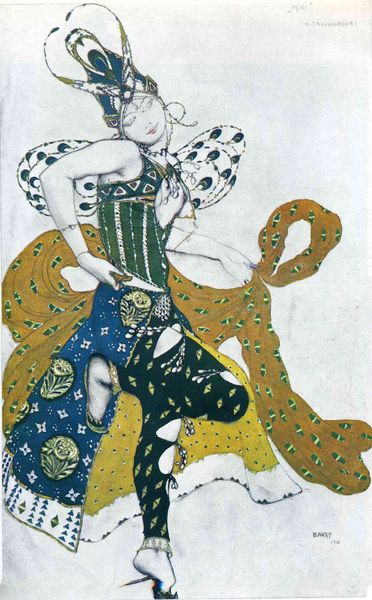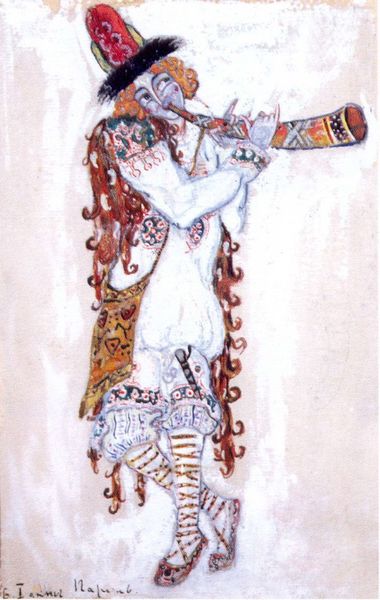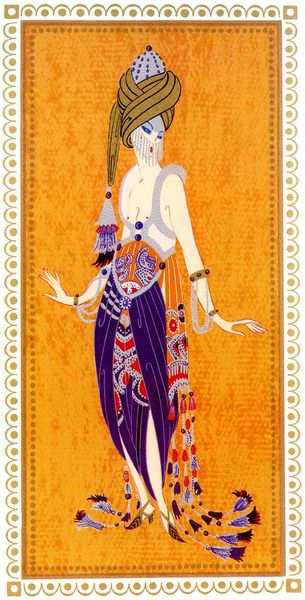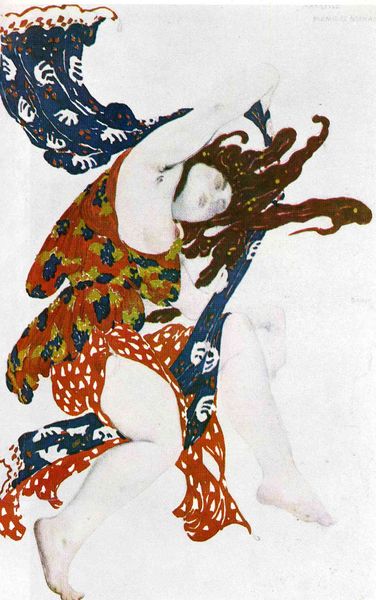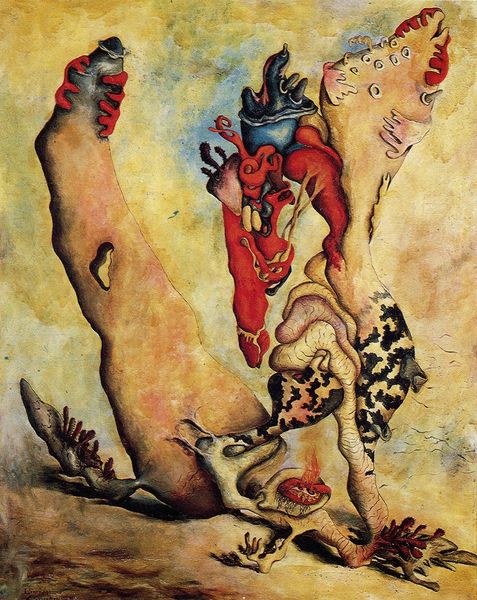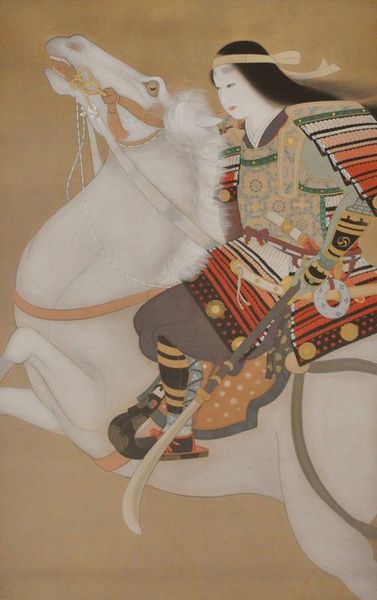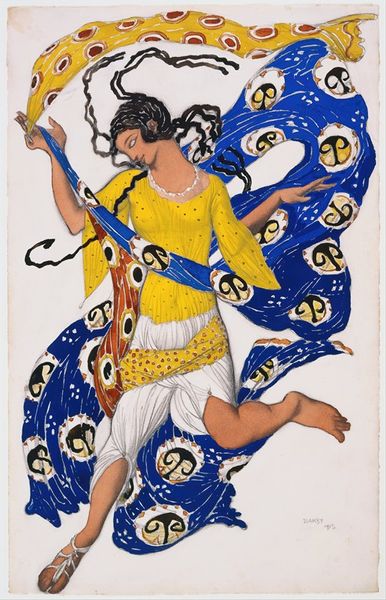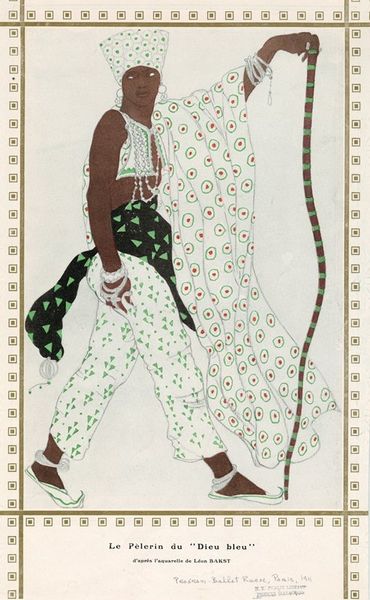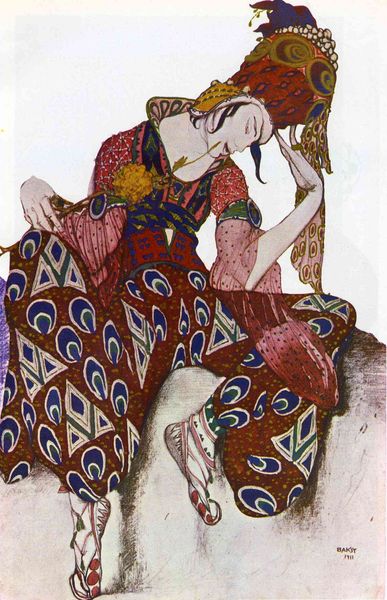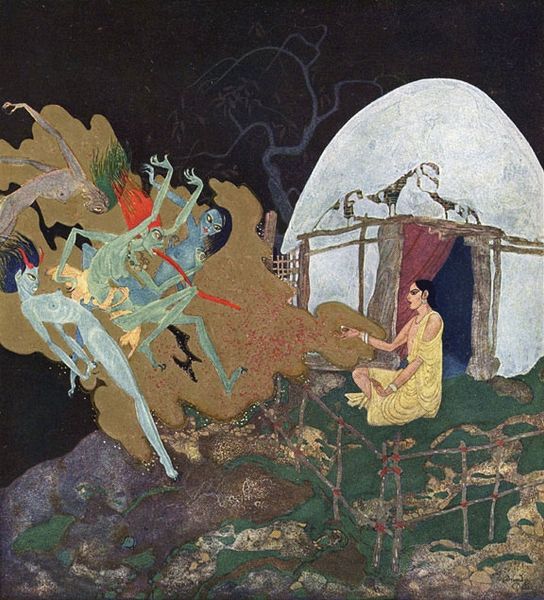
painting, gouache
#
portrait
#
art-nouveau
#
painting
#
gouache
#
orientalism
#
costume
#
symbolism
#
portrait art
#
expressionist
Copyright: Public domain
Curator: This is Léon Bakst's "Scheherazade la sultane bleue," created around 1910. It's done in gouache, offering a dazzling impression of orientalism. What strikes you first about it? Editor: Immediately, the lavish ornamentation. It's a jewel-toned explosion – opulent blues, reds, and greens vying for attention. And the figure’s pose feels precarious, like she’s balancing on a cloud of colour. Curator: Bakst was a stage and costume designer for Diaghilev’s Ballets Russes, so the theatrics make sense. I'm thinking of the intense labor involved in making a dancer's elaborate costume – from the selection of silk and dye formulas, to beadwork, pattern making. It suggests so much about the consumption habits and material desires of the elites at that time. Editor: Absolutely. You can practically hear the rustle of silk! Ballets Russes shaped early 20th-century aesthetics – dictating taste through set design and advertising. The figure, perched like a queen upon a blue… what is it, a mound?– exudes power. Is she real, or a fantasy constructed for a Western audience? Curator: Both, I think. Bakst drew on Orientalist tropes but elevated the craft, incorporating symbolism, Art Nouveau designs in the costuming and the very application of the paint itself. It makes me wonder about the artistic dialogue happening, especially since Ballets Russes performances served the elites, the powerful few in Europe, perpetuating notions about “the exotic” through spectacle. Editor: Yes, consider the performance within its moment, the staging of orientalism within a European theatre for aristocratic consumption. The gaze of the viewer is being shaped as much as the representation of Scheherazade herself. But does this rendering subvert expectations, or solidify them? Her direct, if downcast, stare implicates the viewer somehow, as well. Curator: A valid question. Bakst used the available materials and his position, ultimately creating something transformative. The costuming shows the labor, the historical significance and perhaps transcends pure, flat stereotypes of that era, through careful composition, the considered treatment of paint, and evocative palette. Editor: Indeed. Looking at it now, this image leaves me contemplating how art—and especially performative art—constructs and reinforces the politics of seeing and being seen. Curator: And for me, it highlights artmaking itself – a tangible production of the Ballet Russe phenomenon, using raw materials of costume and scene to construct fantasies that spoke directly to power.
Comments
No comments
Be the first to comment and join the conversation on the ultimate creative platform.
